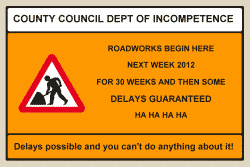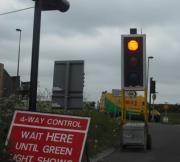Two stories came through in the feeds today and between them they present absolutely the most stupid and ill-conceived remedy for reducing accidents among young drivers.
Before I go on, let’s just remind ourselves that young drivers have accidents due to a combination of inexperience per se and simple biology. It’s an inalienable fact of life that you can’t become experienced in anything without passing through the realms of inexperience first. It’s also an inalienable fact that the human brain isn’t fully mature until the age of around 25. And there’s bugger all anyone can do about either of those things.
But that doesn’t stop them trying.
First of all, Fleet Directory reports on statistics I have mentioned several times in the last few months – that although drivers in the age range 17-24 only account for an eighth of all road users, they are involved in a quarter of all serious or fatal accidents. And the solution to this is… start teaching them to drive cars from the age of 11.
Yes, you read that right. From the age of eleven!
In actual fact, it’s yet another carefully orchestrated publicity stunt – this time by SEAT. I reported back in February this year of a similar idiotic caper, championed by Quentin Willson, and others have also attempted to gain valuable advertising by pushing off-road lessons for toddlers and getting amateur journos to talk about it.
Fleet Directory claims that this is the only such scheme in the country – well, unless the story I reported on back in February is the same scheme, they’re completely wrong on that one! So you wonder how wrong they might also be in their gushing support.
Naturally, IAM is sticking its oar in and is filling its collective colostomy bag at the idea.
But as if 11 wasn’t young enough, this story from the Evening Express in Scotland reports that Aberdeen Council is looking to build a junior driving facility where they’d take people as young as three! Apparently, the “facility” would be available to pre-school clubs and primary schools.
IAM hasn’t latched on to that one yet, but I’m sure they’ll think it’s a spiffing idea.
What planet are these people on? In just the same way that giving sex education to primary school kids hasn’t cut teenage pregnancy – quite the opposite, having whetted their appetites – giving them driving lessons is fraught with similar problems.
When I mentioned that original scheme back in February I said that if you give a typical 11-year old the chance to drive a car, he isn’t likely to want to wait another 6 years until he can go for his licence. A 3-year old definitely won’t want to wait 14 years, and having been fed “grown-up” ideas to a brain that simply isn’t grown-up, he probably won’t.
Cars are for adults. We already have way too many of them on the roads as it is, and this idiotic scheme can only have one eventual outcome – reducing the minimum age for driving, and so artificially increasing the number of drivers out there.
As I mentioned above, the human brain doesn’t mature until around 25 years (and the modern male is 5 years behind that, anyway). While it is maturing, it needs gentle conditioning. It can’t be slammed into adult-overdrive just because of some bizarre moneymaking publicity event by people who don’t have a clue.
 wait for a GP referral slot. I tried to get there, but a journey which would normally have taken 10 minutes had to be aborted after only managing to travel less than 1 mile in 45 minutes. To make matters worse, when I called the NHS – which has to run the City Council and NET a close second for stupidity – I was told they couldn’t access my records without a password (so I couldn’t even tell them I was sorry that I couldn’t get in), and that this should have been provided with my referral letter from my GP. I explained I didn’t get a referral letter, and that the GP had done it directly, and was told that my surgery would be able to provide it. Of course, when I phoned my surgery the only person with access to the password system was stuck in the bloody traffic!
wait for a GP referral slot. I tried to get there, but a journey which would normally have taken 10 minutes had to be aborted after only managing to travel less than 1 mile in 45 minutes. To make matters worse, when I called the NHS – which has to run the City Council and NET a close second for stupidity – I was told they couldn’t access my records without a password (so I couldn’t even tell them I was sorry that I couldn’t get in), and that this should have been provided with my referral letter from my GP. I explained I didn’t get a referral letter, and that the GP had done it directly, and was told that my surgery would be able to provide it. Of course, when I phoned my surgery the only person with access to the password system was stuck in the bloody traffic! appears to have been a 30mph road (listening to the traffic reports) near Wilford. All of this was before, during, and after the rush hour.
appears to have been a 30mph road (listening to the traffic reports) near Wilford. All of this was before, during, and after the rush hour.